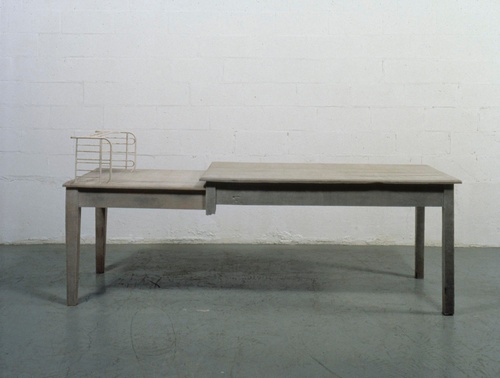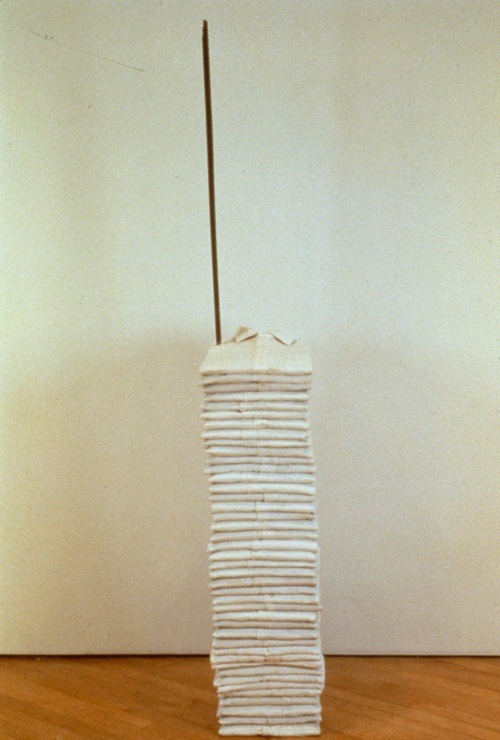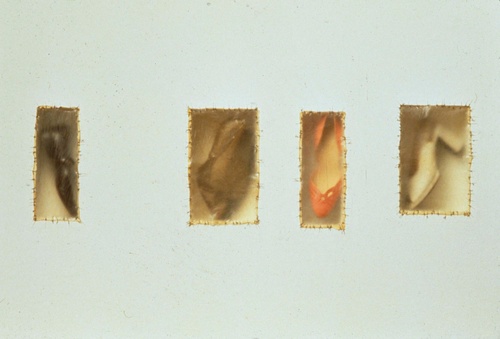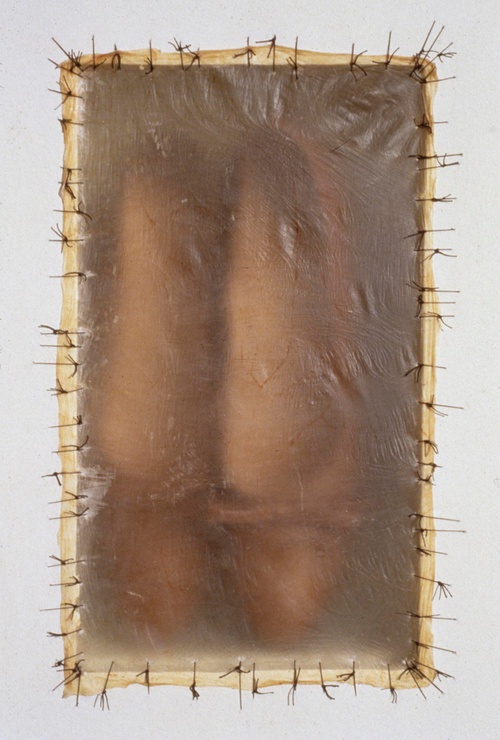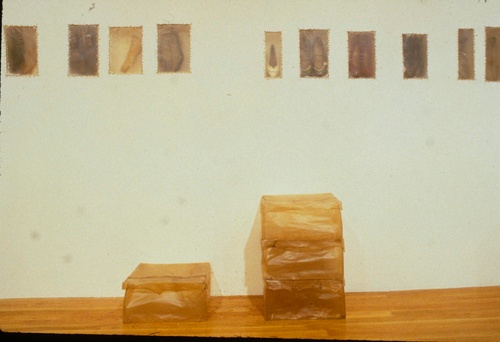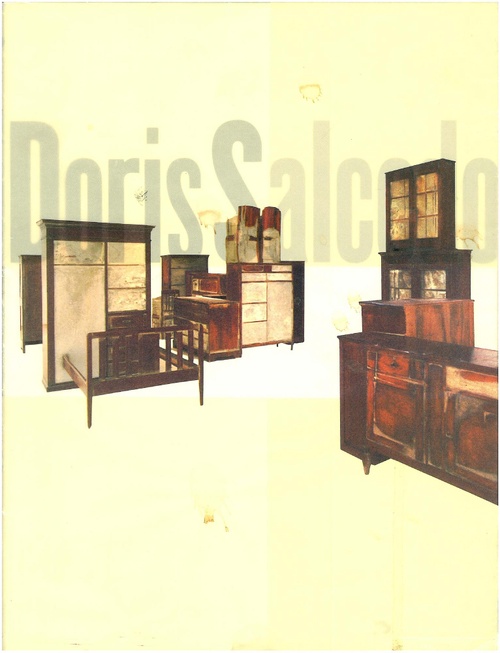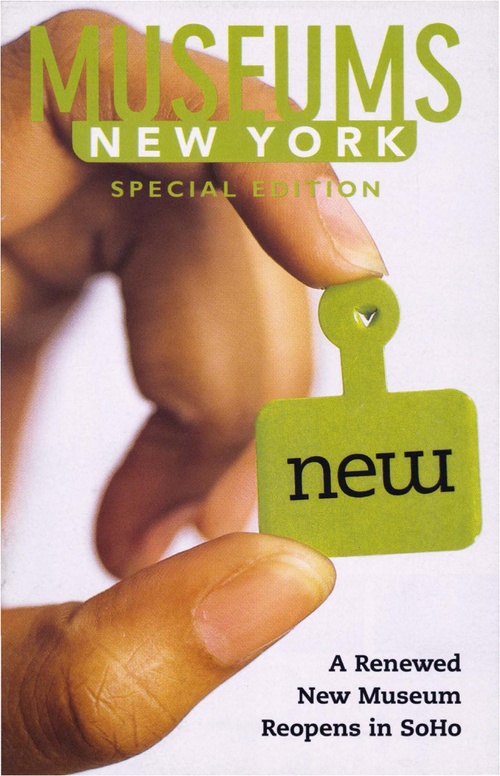Unland/Doris Salcedo
Unland/Doris Salcedo
Doris Salcedo, born in 1958 in Bogota, Colombia, is a leading member of a new generation of artists who have achieved international acclaim during the past five years, partly as a result of their choosing to live and work in their countries of birth. Notably for artists from such countries as Brazil, Colombia, Cuba, Mexico, and Venezuela, the once-obligatory step of emigrating in order to further one’s career has been increasingly supplanted by the international art community’s recognition that the validity of art made outside world art centers is determined in part by being accepted on its own terms. Artists such as Salcedo frequently travel abroad to participate in exhibitions and keep abreast of developments in the field, but their work achieves contextual resonance from the place they choose to call home.
For Salcedo, the primacy of one’s home is reflected in her choice of title for her first solo exhibition in a U.S. museum. Unland, inspired by Paul Celan’s poetry but not borrowed from it, exists neither as a word in the English language, nor as a transposition from Spanish. It is an invented term, possibly referring to the land that one has come from, but with ominous overtones that suggest a land that has been taken away. Were one to use it as a verb – to Unland – the reference would clearly be the act of forcibly driving somebody off his or her territory.
In Colombia, where Salcedo lives and works, the incidence of violent death has risen over the past fifty years to the point where it has become the primary threat to the social fabric. Although this violence does not discriminate between urban and rural victims, its most devastating effects can be witnessed in the less developed regions where Salcedo has traveled on a regular basis during the past decade. Seeking out and interviewing the survivors of violence, the artist is completely absorbed in acting as a secondary witness to the event, to the point where it becomes impossible for her to even try and revisit or reconstruct the original traumatic act for us. As she explains:
“I have come to meet people that have had the generosity of sharing with me their pain. Pain is constantly being revived. I think that allows for the establishment of another type of relation with reality. The distance between them and me disappears, allowing their pain to take over me, to take over my center. If I manage to make a good piece that circulates in the center of society, then their pain will enter into the core of this society. The victims will become the main protagonists.”
Like much of Salcedo’s work of the recent past, Unland incorporates elements of architecture and domestic life that are indirectly connected to the individuals whose stories she has committed to heart. By creating the semblance of shelter, the artist constructs a site where the careful addition of personal effects and/or human and animal fragments signals the transformation of ordinary materials into an intimate encounter with the reconstructed memory of loss. In his catalog essay for this exhibition, Charles Merewether details the effect of such encounters in Salcedo’s work of the early 1990s:
“Plates, clothing, buttons, zippers and bones are grafted, compressed, and compacted into the surfaces of pieces of furniture. Chairs are covered by a fine skin of lace as if seared into the wood, bones are embedded into the side of a cabinet, a spoon forced between the seams of wood of a kitchen bureau. We may say the furniture appears wounded, both physically and psychically.”
Although considerably more subdued than the works in this description, the individual pieces in Unland are no less emotive in their presentation of a visual mystery which the viewer is then invited to gradually unravel. Fragile in the extreme and nearly impossible to fabricate, the sculptures are also absurdly simple in their underlying illusion of a table which appears as if it has taken possession of a human life, sprouting thick effulgence of hair and a thin covering of raw silk in its over-identification with the memory of the lost loved one. The key to this transition within Salcedo’s work is that she is no longer rendering the site in the form of a crypt or funerary receptacle, but rather as an inanimate object where a wayward life-force has unexpectedly taken refuge.
Two of the Unland sculptures point to different perspectives on this anthropomorphic metaphor. The first work in the series, the Orphan’s Tunic,1996-97, is a long wooden table divided into three roughly equivalent visual zones: unadorned, bearing a white shroud of raw silk, and an intermediate zone which the viewer only gradually recognizes as covered with human hair. Although it is very difficult to imagine any other way of realizing this work, steady examination is necessary to detect the existence of the thousands of minuscule holes drilled through the table, permitting each hair to pass individually through the body of the table with its physical integrity intact. Together these thousands of hairs cover the surface in a profusion, conjuring up feelings of the uncanny, while thousands more protrude into the open air or hold the silk shroud to the table in an unimaginably delicate web of stitchery.
In the second work, Irreversible Witness, 1995-98, the movement of hair across the width of the table (rather than its length) and the sewing of the hair both above and below the fabric lend the entire structure a ghostly tan and gray color, as well as a slight luminescence caused by the passing of one surface over another. A child’s metal crib, which has been covered in an even more intricate hair and silk shroud whose color and texture suggests the oxidation of metal, appears to be emerging from (or being absorbed into) one end of the table. This truncated gesture is a metaphor for the absent violence in the narrative and contrasts dramatically with the cracks and blemishes of the wood surface, which are transformed by the artist into a compelling, gauze-like wound.
Functioning as both containers and sites, these works act out a memory-driven process uniquely absent in Colombian society, where the pervasiveness of violence is so extreme that it has produced a unique “lack of engagement with the idea of commemoration” (Merewether). As viewers of Salcedo’s work, we are not expected to join in mourning someone we do not know, nor to become deeply engrossed by the specifics of loss; but we are able to detect evidence of trauma in our recognition that regular channels of communication are blocked and representations of the original event have been lost forever to the vagaries of memory. Third hand witnesses to the original victim’s inability to speak, we watch as the human spirit takes refuge from its terror in the distant memory of an unimpeded life.
If we are to take Salcedo’s ideas to another level, Unland also expresses the artist’s recognition that the ongoing displacement of individuals, families, and entire communities is rooted in deep social inequalities. For each person killed there is someone else who does the killing, and at least one other person whose life is torn asunder. Multiplied into the thousands, this ongoing devaluation of human life underscores the lack of adequate social rituals, in Colombia and elsewhere, for addressing the depth of this collective tragedy. Experienced from this perspective, the modesty and unassuming character of Salcedo’s work and its refusal to draw explicit attention to itself are a direct outcome of her response to the extraordinary dignity of these individuals, who have been forced to withstand unimaginable loss without the benefit of any social legitimacy attached to their suffering.|
Merewether writes, “The significance of Salcedo’s work lies in its recognition that the legacy of the past, of the violence committed by repressive regimes or social forces, cannot be forgotten; and unless addressed, it will return to haunt future generations.” As the combined tragedies of this century indicate all too clearly, the act of remembering that which cannot be reconciled to one’s present may not alleviate any immediate suffering, but it can enable others to learn from example. As a site where loss is enacted, Salcedo’s work does not provide a template for suffering, but rather suggests that the act of memory is all the more powerful a weapon when placed at the disposal of those who have little else. In a sense, those thousands of hairs in the orphan’s tunic recall the amazing feats of delicate flowers that push their way through rock, cement, or the most unyielding soil because their urge to live is greater than the forces holding them back. On the one hand, Unland opens the door to a terrible form of beauty; on the other, it helps pave the way toward our coming to terms with those millions of humble individuals who confront the unendurable every day of their lives and miraculously prevail.
-Dan Cameron, Senior Curator
